- VMware Technology Network
- :
- Desktop Hypervisor
- :
- VMware Workstation
- :
- VMware Workstation Pro Discussions
- :
- Network Bridging problem; Windows 7 Host and Windo...
- Subscribe to RSS Feed
- Mark Topic as New
- Mark Topic as Read
- Float this Topic for Current User
- Bookmark
- Subscribe
- Mute
- Printer Friendly Page
- Mark as New
- Bookmark
- Subscribe
- Mute
- Subscribe to RSS Feed
- Permalink
- Report Inappropriate Content
Network Bridging problem; Windows 7 Host and Windows Server 2008 Guest in VMware Workstation 7.1
For some reason I cant get my Window Server 2008 Guest to see my Windows 7 Host or the Default Gateway Router when set to Bridged.
The Physical map looks like this

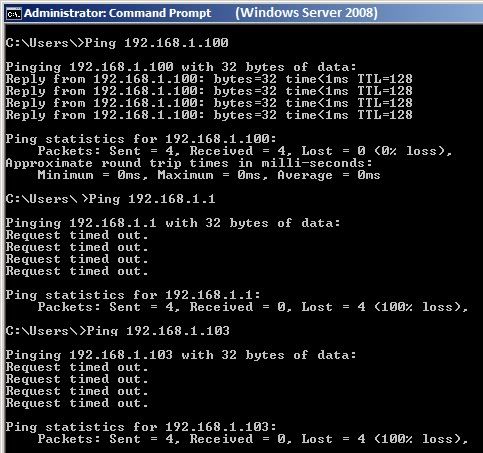
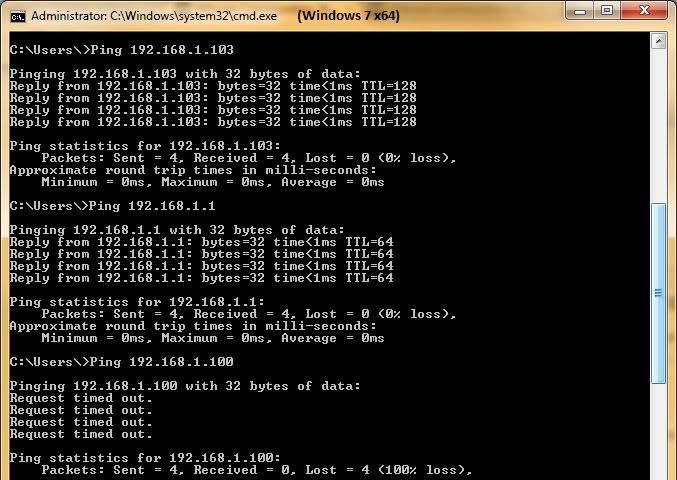
I only have one NIC in the host so it's not bridging the wrong NIC.
I also have Bridging protocol installed on the host NIC (though a Bridge Connection doesnt show up in either Host Network Connections panel, as Vmnet0, if it is suppose to be there with Vmnet1 and 8
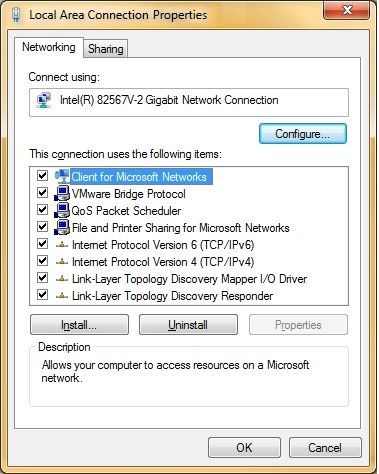
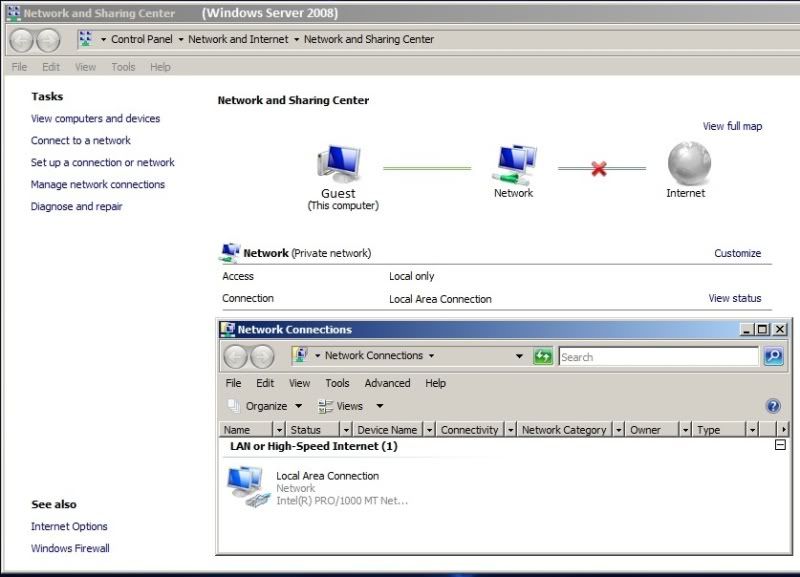
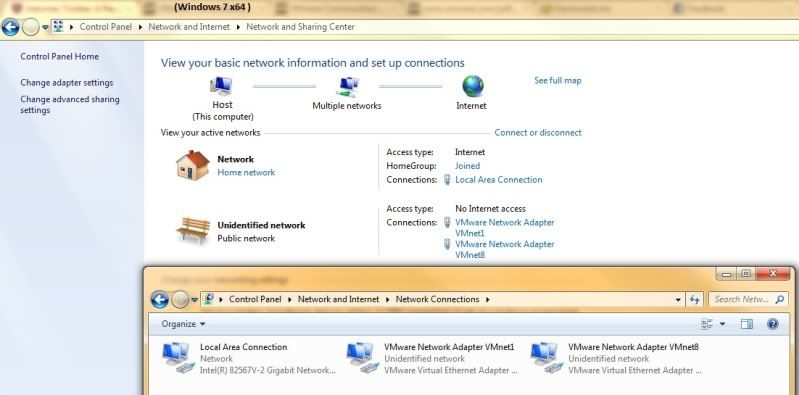
I put the MAC of the Guest NIC on the reserve list on my router with 192.168.1.100, though both Host and Guest are also set static.
The Network Maps for each look like this
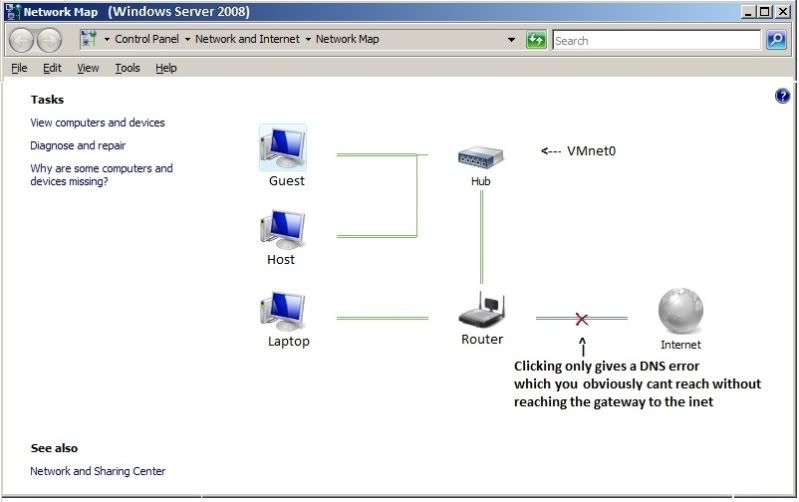
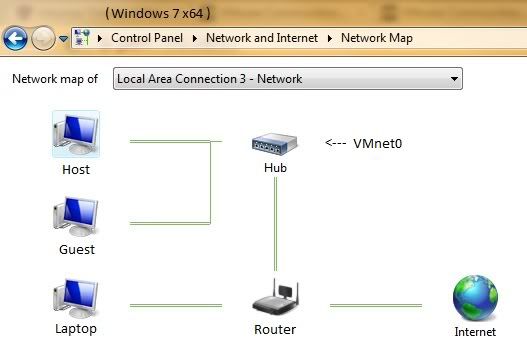
Ipconfig /all for both looks like this
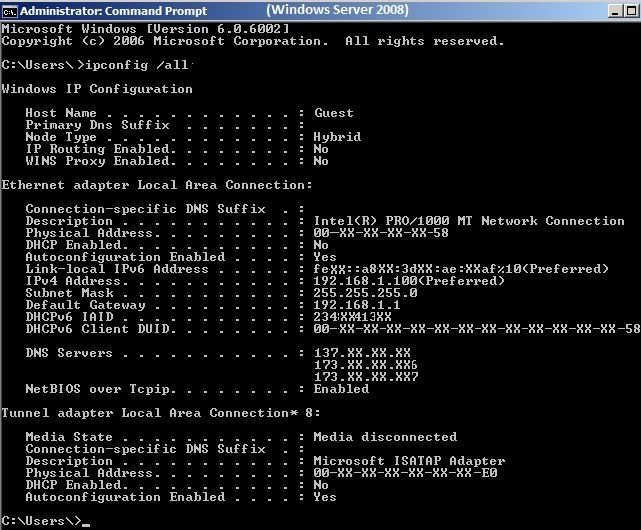
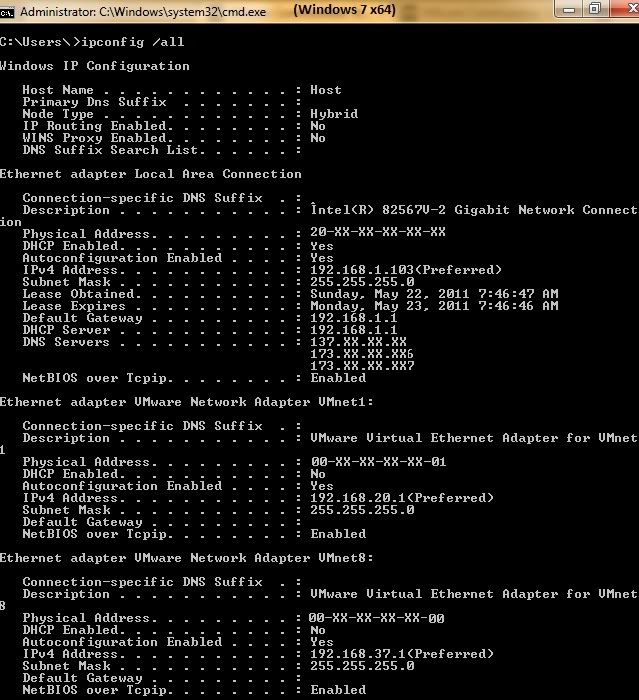
I even added Allow lines in both ACLs for the Firewalls, in case one or the other was blocking either way.
I'm not sure what else to do short of reinstalling the Guest, which I'll probably try if noone has any idea in a few days.
I have already reinstalled VMware with no change.
The .vmk says
If there's something I didnt post that can help figure this out let me know.
- Mark as New
- Bookmark
- Subscribe
- Mute
- Subscribe to RSS Feed
- Permalink
- Report Inappropriate Content
Please scroll to the right to see the whole pictures (making them smaller would have made them illegible
- Mark as New
- Bookmark
- Subscribe
- Mute
- Subscribe to RSS Feed
- Permalink
- Report Inappropriate Content
Disable automatic bridging on VMnet0 in the Virtual Network Editor and set it to a specific NIC.
Temporarily disable all AntiVirus, Firewall and or Security type software while testing connectivity issues.
BTW x'ing out information hinders some diagnostic/troubleshooting and unless it's a Public IP Address then it's just being ridiculous! ![]()
- Mark as New
- Bookmark
- Subscribe
- Mute
- Subscribe to RSS Feed
- Permalink
- Report Inappropriate Content
The Bridged NIC is specific in VMnet0 under VME, not Automatic.
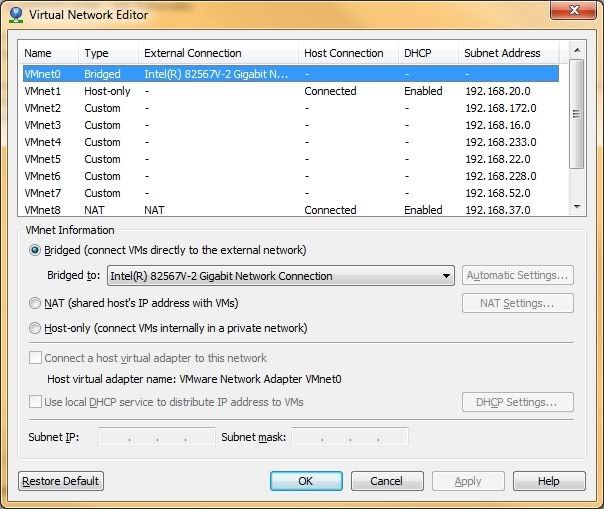
I did temporarily disabled all those after the ACL lines didnt help.
(Sorry I didnt mention this two things, so much to remember lol)
I xx'd out any physical address, tunneling or otherwise and DNS's that could give away more of my location information then I feel confortable with since I use local DNSes.
Noone needs to know my MAC addresses to troubleshoot this. I can verify any are the same in two location if anyone needs me to just say where.
I wouldnt post my SSN on a public forum, same goes with MACs.
IPs and hostnames are easily changed, MACs arent.
- Mark as New
- Bookmark
- Subscribe
- Mute
- Subscribe to RSS Feed
- Permalink
- Report Inappropriate Content
I wouldnt post my SSN on a public forum, same goes with MACs.IPs and hostnames are easily changed, MACs arent.
I agree with the SSN but the rest. your being to paranoid! ![]()
FWIW Unless you've changed the Scope of the DHCP Server's IP Address Pool then the default Start IP Address is on the WRT350N is 192.168.1.100 and it looks like you have manually assigned that IP Address to the Guest however if that IP Address was previously assigned via DHCP to another system, physical or virtual, and is still resident in the Router this can sometimes cause issues. BTW Whenever manually assigning IP Address they should be outside the Scope of the DHCP Server's IP Address Pool.
- Mark as New
- Bookmark
- Subscribe
- Mute
- Subscribe to RSS Feed
- Permalink
- Report Inappropriate Content
The router does do DHCP but the pool is very small because most of my devices are set static. My static IPs start at 1.100 but the dhcp pool is 1.146 to 1.160, if I remember right
- Mark as New
- Bookmark
- Subscribe
- Mute
- Subscribe to RSS Feed
- Permalink
- Report Inappropriate Content
The router does do DHCP but the pool is very small because most of my devices are set static. My static IPs start at 1.100 but the dhcp pool is 1.146 to 1.160, if I remember right
Then I gather you changed the Router's default settings.
Anyway does the VM have Internet Connectivity?
If you boot the VM, as and example, with a Live Linux ISO Image like DSL does the VM have Internet Connectivity or can it ping the Gateway and or the Host. Note: You may have to temporarily remove the USB Controller when booting a Windows VM with a Live Linux Distro to avoid mouse tracking conflicts as temporarily changing the Guest Type to Linux does not always relieve the mouse tracking conflicts when doing this type of test.
- Mark as New
- Bookmark
- Subscribe
- Mute
- Subscribe to RSS Feed
- Permalink
- Report Inappropriate Content
A good bit.. My IPs are in several groups depending on what/who the device belongs to in the house.
An interesting test.. I'll try it and see what happens..
- Mark as New
- Bookmark
- Subscribe
- Mute
- Subscribe to RSS Feed
- Permalink
- Report Inappropriate Content
I tried a Backtract live USB, a Knoppix USB and a Live Suse CD iso. They all booted fine but none had any network connectivity.
- Mark as New
- Bookmark
- Subscribe
- Mute
- Subscribe to RSS Feed
- Permalink
- Report Inappropriate Content
For giggles, I tried an OS X Vm that I had installed a few months ago but wasnt using and it doesnt see the Host or Gateway on bridge, using the same settings I was using with the Server 2008 VM. (I powered on the Server VM first)
